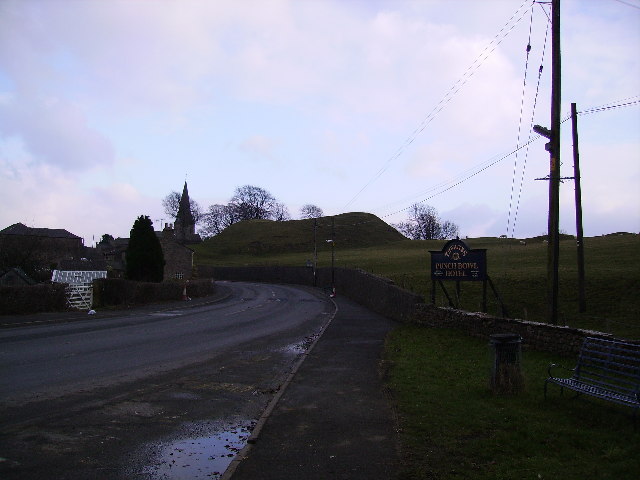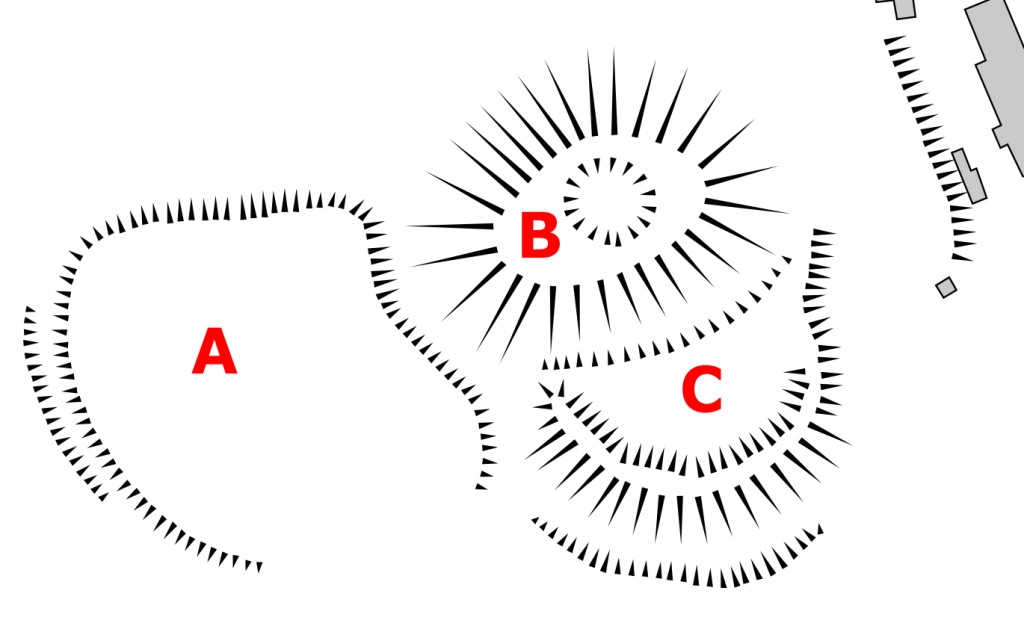
Burton in Lonsdale Castle, also known as Castle Hill, is a Norman castle in Burton in Lonsdale, North Yorkshire. It was probably built soon after 1092 by Nigel de Abigni, the royal steward to William II. It was used by the Mowbray family as the centre of their regional estates until after 1322, when it fell into disuse.
History
It is uncertain exactly when the castle was constructed. The Anglo-Saxon settlement at Burton in Lonsdale had been owned by Tostig, the Earl of Northumbria; after his death in 1066, William the Conqueror confiscated the estates. In 1092, his son William II marched north and defeated Dolfin of Carlisle, a powerful Anglo-Saxon magnate. William built Carlisle Castle and began to settle the area with followers from southern England, creating an uncertain, fluid frontier region, contested by the kings of Scotland and local lords.

Burton in Lonsdale Castle was built to help control the southern part of that territory – the settlement lay on a crossing point over the River Greta. Burton was probably granted at this time to Nigel de Abigni, a Norman lord who had risen to become the royal steward to William II, and held lands across Lincolnshire and Norfolk. He may well have been responsible for the construction of the castle itself, which initially took the form of a ringwork defence, protected by two further baileys.
Nigel died in 1129 and, while the castle was temporarily managed by the Crown, it was recorded that it was garrisoned by a knight, ten sergeants, a porter and a night watchman. When Nigel’s son, Roger, came of age and inherited the castle, he took his mother’s surname, becoming Roger de Mowbray.
Under the feudal system, the Mowbray family owed the Crown extensive military support – around a hundred knights – in exchange for the rights to their lands. To generate this force, Burton and the surrounding lands were initially granted to William de Lancaster in exchange for his providing four knights to the Mowbrays.
By the middle of the century, however, the Mowbrays took the estate back and began to manage them directly. Burton in Londsdale Castle became the centre, or caput, of the Burton Chase, a set of lands 300 square kilometres (120 sq mi) in size that ran across the region. The settlement grew, and may have been considered a borough by the start of the 13th century.
The threat from Scottish forces grew in the late-13th century, with raiding parties travelling south as far as Lancashire. Probably around this time, the centre of the castle was redesigned: the ringwork was filled in to produce a more defensible, flat-topped motte. By 1298 and the death of Roger de Mowbray, the first Baron Mowbray, however, the family had begun to sell off their lands around Burton. Roger’s son, John de Mowbray, rebelled against Edward II and was executed in 1322. The settlement of Burton appears to have gone into decline, and by 1369 the castle had been abandoned.
Archaeological investigations of the site were carried out in 1904 by Herbert White and J. Walker. In the 21st century, the castle is protected under UK law as a Scheduled Monument.
Architecture
Burton in Lonsdale Castle now takes the form of a motte-and-bailey castle, overlooking the local village. The motte, originally a ringwork but subsequently filled in, is now 9.6 metres (31 ft) high, topped with a 3.3 metres (11 ft) breastwork wall. It would originally have been protected by a ditch, and by the steep slope of the ground on the north side of the site. The main bailey lies to the west, and is 57 by 51 metres (187 by 167 ft) across; a smaller, semi-lunar bailey 21 metres (69 ft) across protects the south site of the motte.
The site and the earthwork defences were once completed paved and faced using stone and cobbles.
Bibliography
- Dodson, C. T. J. (2007) The Earl of Derby’s Courthouse at Burton-in-Lonsdale. Hudson History: Settle, UK.
- Moorhouse, Stephen (1971) “Excavations at Burton-in-Lonsdale: A Reevaluation,” Yorkshire Archaeological Journal Volume 43 pp. 85-98.
- Stephens, Tony and Susan Gregory. (2006) “Burton in Lonsdale in the late Medieval Period,” North Craven Heritage Trust Journal.
- White, H.M. (1905) “Excavations in Castle Hill, Burton in Lonsdale,” The Antiquary Volume 41 pp. 411-417.
Attribution
The text of this page is licensed under under CC BY-NC 2.0.
Photographs on this page include those drawn from the Wikmedia website, as of 31 March 2020, and attributed and licensed as follows: “Burton in Lonsdale“, author Ron Shirt, released under CC BY-SA 2.0.
